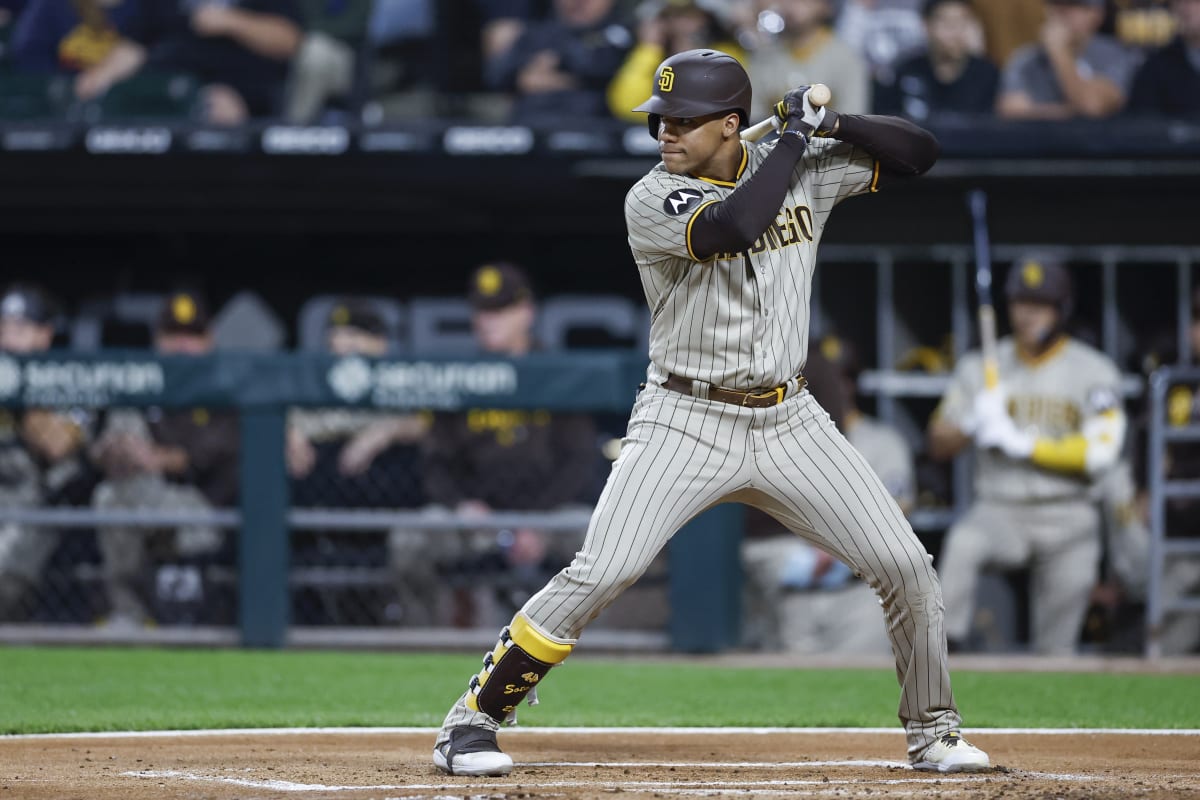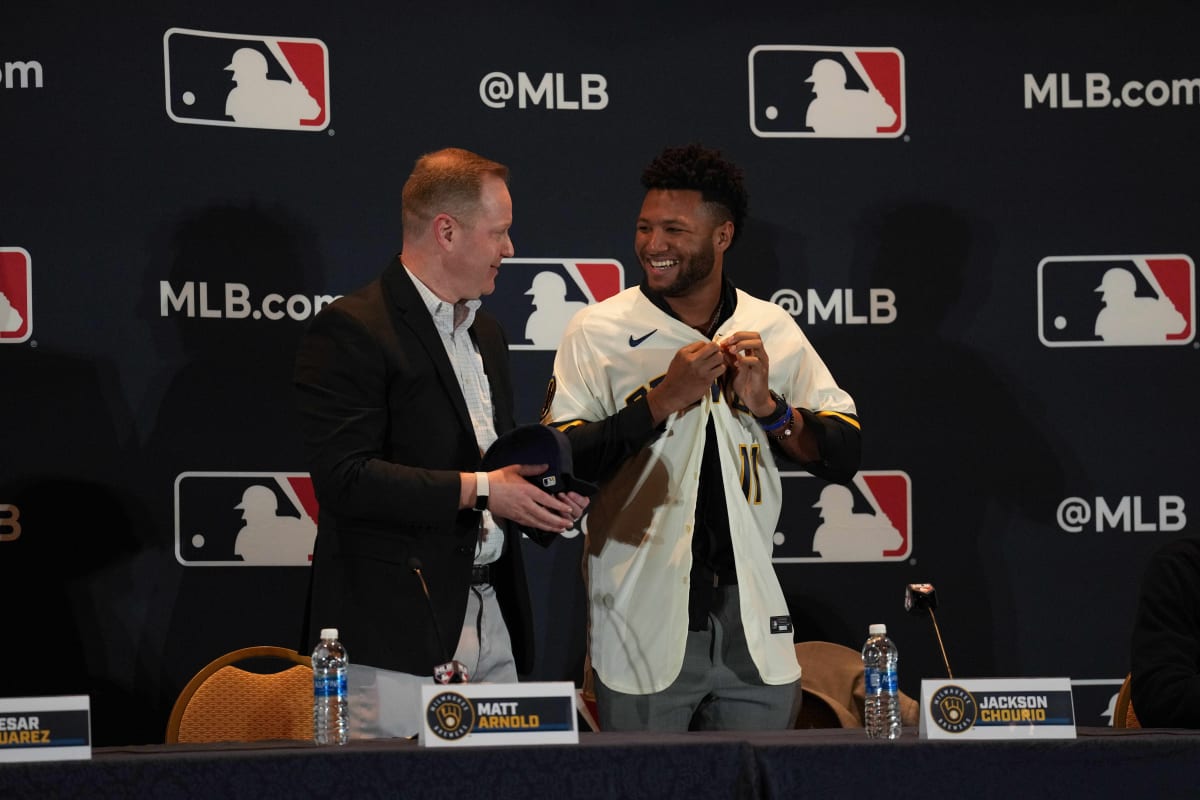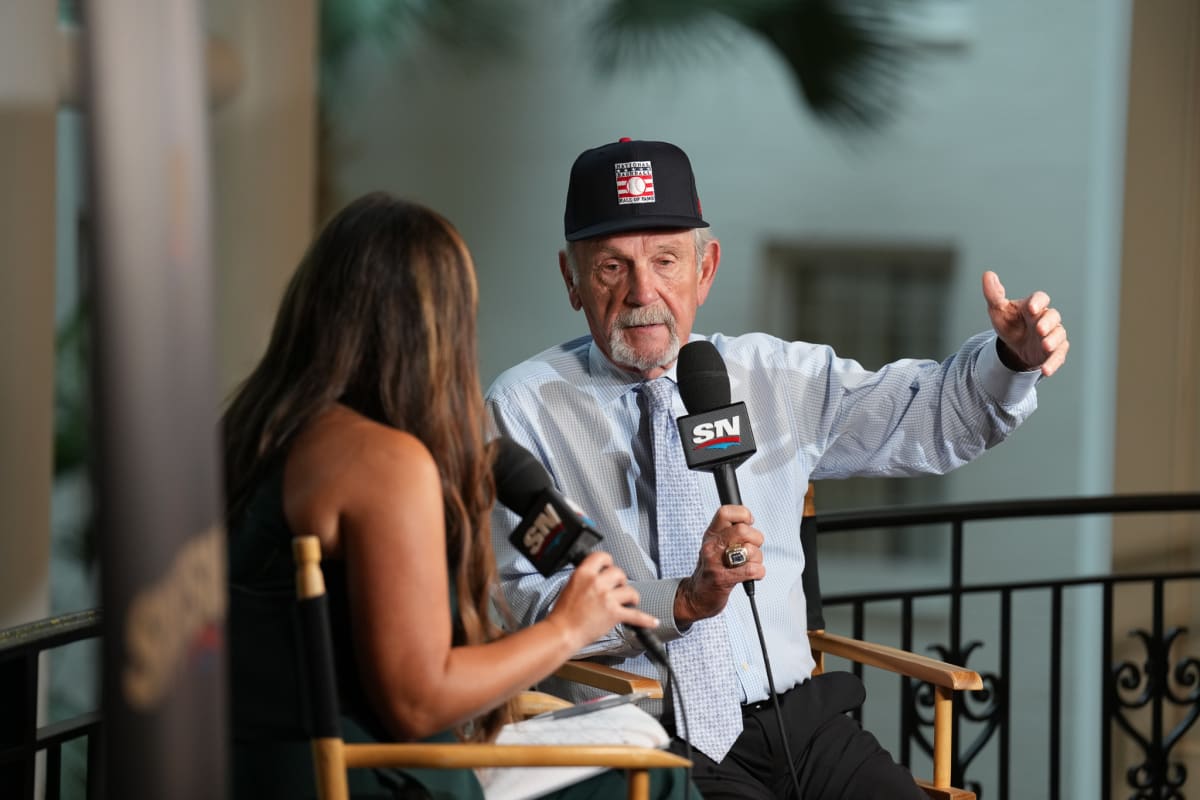Some trades make too much sense not to happen. Juan Soto to the Yankees is one of them.
The Padres will trade Soto somewhere to reduce their payroll as he enters his platform season before free agency. The Yankees for years have needed a big left-handed bat, especially to make pitchers challenge Aaron Judge more often. Soto is the perfect fit.
The holdup is the Padres value Soto as if banking the Yankees will re-sign him—as something more than a rental. That’s not necessarily the case. But even if it’s a one-year trial, it’s a trade New York must make. Michael King is a nice pitcher with outstanding stuff, but he last threw 110 innings in 2018. He does not get in the way of acquiring one of the five best pure hitters in baseball.

Kamil Krzaczynski/USA TODAY Sports
The added pressure for the Yankees comes from timing and history. The timing: They went 82–80 last year with an offense that ranked 29th in batting average, 27th in on-base percentage, 25th in runs per game and 22nd in slugging. New York cannot run back the same outfit. The history part of it is how the Yankees, in recent years, have too often shrunk from acquiring impact players.
It was Cliff Lee in 2010. The Yankees had a deal with the Mariners, but balked when Seattle wanted to substitute Adam Warren, Ivan Nova or Eduardo Núñez for injured infielder David Adams. Lee and the Rangers then beat New York in the ALCS. In ’17, it was Justin Verlander. He went to the Astros in a trade and beat the Yankees in the ALCS. The next year it was Gerrit Cole, who also went to Houston as New York did not want to part with Gleyber Torres or Miguel Andujar. Also in ’18 was Bryce Harper, whom the Yankees didn’t want because they had outfielders such as Andujar, Clint Frazier and Brett Gardner. (New York decided Harper could not play first base.) All those teams that made the big acquisitions on which the Yankees passed—the Rangers, Astros (twice) and Phillies—went to the World Series.
Lee, Verlander, Cole, Harper. Is Soto the next impact player on which the Yankees take a pass? That potential cost is greater than whatever it costs to add exactly the type of hitter they need.
Mookie Betts will play second base next season for the Dodgers—and probably for the rest of his career—because he wants to. It’s not about team architecture. Betts has always been an infielder at heart; he moved to the outfield because the Red Sox had Dustin Pedroia holding second base.
Last year Betts volunteered to move to second base to open right field for Judge, who was a free agent. Betts says he gets more worn down running to right field every half inning than he does playing second base.
Betts is a plus defender at second base, so the move makes sense for the team. Now the Dodgers need to find a right-handed hitting corner outfielder, such as Manny Margot or Randy Arozarena in a trade, or Lourdes Gurriel Jr. as a free agent.
A big key to the eight-year, $82 million deal Milwaukee gave to Jackson Chourio are the two option years the Brewers control. In return for giving Chourio eight years of guaranteed money before he plays in a major league game, Milwaukee gets control of his age 28 and 29 seasons at $25 million each (or a $2 million buyout). Buying out two prime free agent years at slightly above the average of the top 125 players today ($20 million) is a huge win for the club.

Kyle Schwab/USA TODAY Sports
Look at it this way: The Brewers are paying Chourio over his first eight seasons like a player who should make multiple All-Star teams—similar to how Manny Machado was paid from the same ages (20 to 27). But by buying two free agent years so cheaply, the Brewers see huge savings at the back end of the deal. Here is how Chourio’s guaranteed money compares to that of Machado, Harper and Carlos Correa (all of whom hit free agency at 26 or 27) through ages 27 and 29:
| 20 to 27 years | 20 to 29 years | |
|---|---|---|
Manny Machado |
$78 million |
$142 million |
Bryce Harper |
$85.9 million |
$120.9 million |
Carlos Correa |
$61.8 million |
$128.4 million |
Jackson Chourio |
$82 million |
$107 million |
The Mariners’ trade with Atlanta was little more than a salary dump, raising more questions about how committed Seattle is to finishing off a team that has won 90, 90 and 88 games the last three years.
Seattle off-loaded the contracts of Marco Gonzalez and Evan White while sending outfielder Jarred Kelenic to the Braves. With too much swing-and-miss, plus difficulty dealing with failure, Kelenic did not figure heavily in Seattle’s plans. The Mariners hoped he might turn a corner after recovering from a broken foot (caused by kicking a water cooler), but Kelenic had just one extra-base hit and scored one run in 15 games post-return.
The deal is not a precursor to a bigger deal in place to get more offense, according to a source. The Mariners are shopping for offense below the top of the market, the source says. Seattle did talk to San Diego last month about Soto, but it did not get a green light from ownership to pursue the expensive one-year rental.
Free agent Cody Bellinger would be a smart fit, but he is also deemed too expensive by ownership. Bellinger looks destined for a team that trains in Arizona (Giants? Cubs?) and, according to one source, seems an unlikely fit for the Yankees, who are locking in on a Soto deal.
The Mariners do have interest in KBO outfielder Jung Hoo Lee but were told Lee prefers to play centerfield for a major league team. Seattle is not moving Julio Rodríguez.
Wherever Seattle turns for offense, it will look for hitters who can put the ball in play. Only Minnesota struck out more than the Mariners last year. Eugenio Suárez, Teoscar Hernández and Kelenic—all no longer on the roster—combined for 557 strikeouts. No team had fewer opposite field hits last season than did Seattle.
Yankees shortstop Anthony Volpe knows he needs to make swing adjustments this winter after buying into the prior coaching staff’s heavy emphasis on hitting the ball in the air to the pull side. Pitchers preyed upon the uphill path of his swing, and Volpe was the worst hitter in baseball on pitches at least three feet off the ground and higher (.049, with just three hits in 61 at-bats decided on elevated pitches, including 0-for-28 over the final three months). Volpe has been working with new Yankees hitting coach James Rowson in conjunction with his longtime personal hitting coach.
Infielder Whit Merrifield was the driving force behind the Competition Committee’s smart proposal to prevent infielders from blocking the bases. I asked him why the committee also proposed a rule to mandate pitchers must pitch out of the stretch with runners on base (many prefer the windup with runners at third). He says, “Honestly, we spend so much time going back and forth on the [pitch] clock and other issues that this just wasn’t something that seemed as big. [Umpire] Bill Miller was the one who felt strongly about it.”
Congratulations to newest Hall of Famer Jim Leyland, who, like Whitey Herzog and Tony La Russa, was one of those rare managers who felt like a Hall of Famer even when he was in the middle of his work. Leyland was one of the first managers I saw who walked the outfield during batting practice, making sure to check in personally with his players each day. He took on Barry Bonds in front of teammates and cameras when most people kowtowed to Bonds’s surliness. Leyland won without having lockdown closers. He took losses hard and grinded for wins even harder. His orneriness throughout 1997, especially in the postseason, was off-putting. He seemed to know it was his best chance at finally winning the World Series.

Kyle Schwab/USA TODAY Sports
But my favorite Leyland story comes from June 2, 2010, the night his Tigers pitcher, Armando Galarraga, lost a perfect game when umpire Jim Joyce blew an out call at first base. Joyce thought he made the right call, in the moment. But as he walked off the field after the last out, Joyce saw Leyland pointing at him and yelling.
“He was out!” Leyland barked. “You’ve got to look at it. You blew it!”
That, Joyce said, was the first time “I knew I probably missed it.”
When Joyce reached the umpires’ room, he asked an attendant to cue up the replay. He watched it once. He knew he missed it. He invited reporters into the room, whereupon near tears and with brutal honesty he admitted he blew the biggest call of his life.
Leyland was in his office when reporters told him Joyce was extremely emotional and distraught about missing the call. The manager immediately stood up and marched down the hall to the umpires’ room. Leyland grew up in Perrysville, Ohio, in the shadow of Joyce’s hometown, Toledo. Both grew up in working class families.
Leyland busted into the umpires’ room without knocking.
“C’mon, kid,” he told Joyce. “We’re going to have a beer together. It’s unfortunate that it happened, but we’re going to move on.”
That was Leyland in a span of about 10 minutes: as crusty a competitor as you could come across, but grandfatherly soft on the inside.







